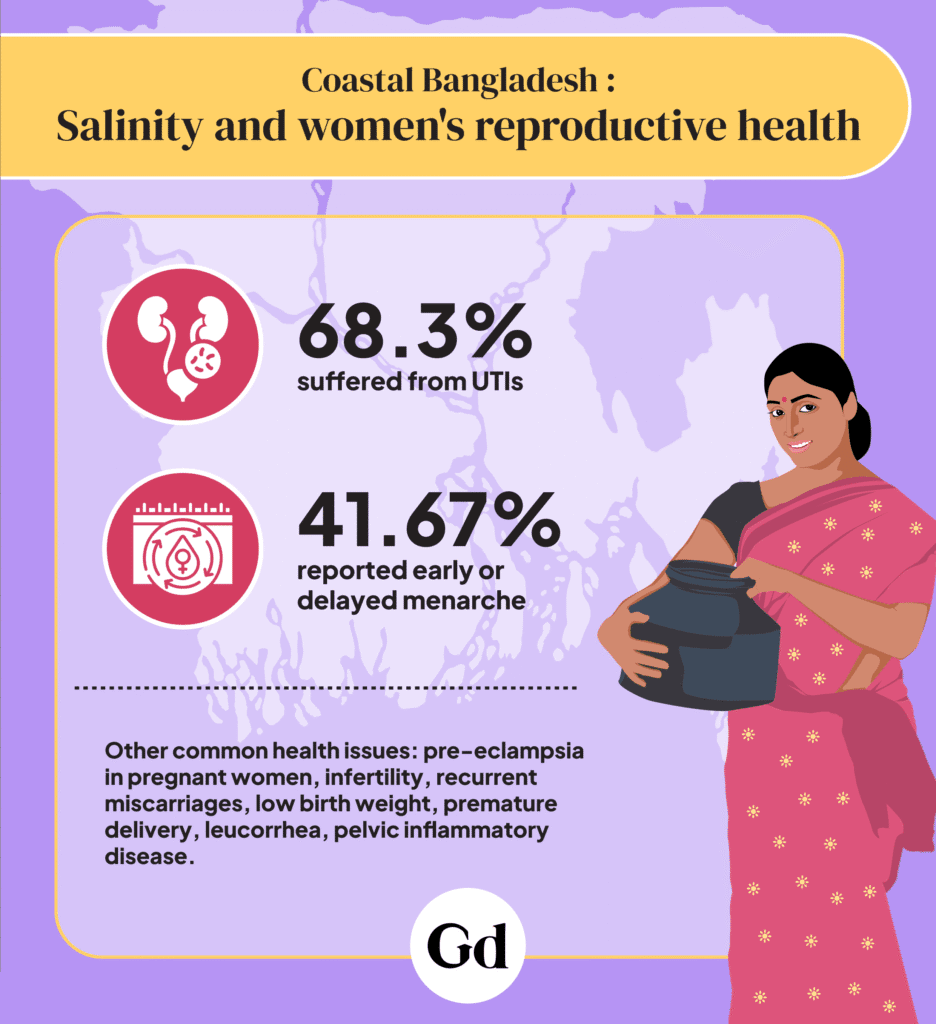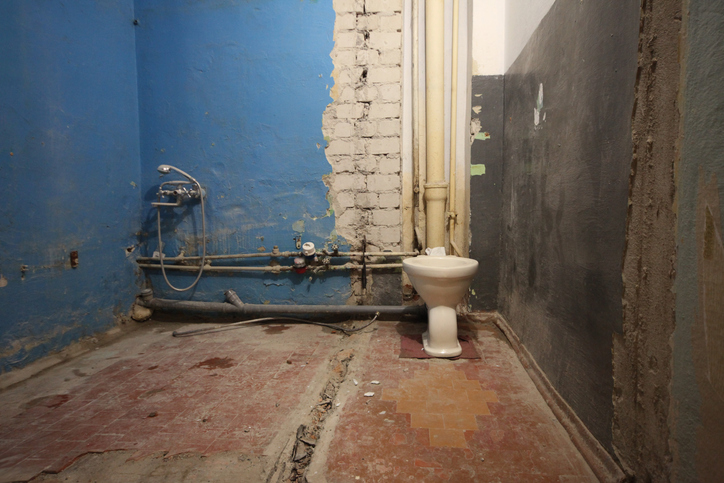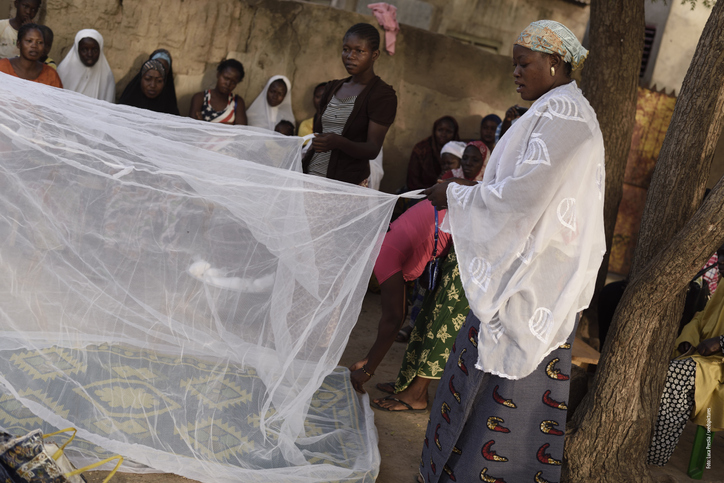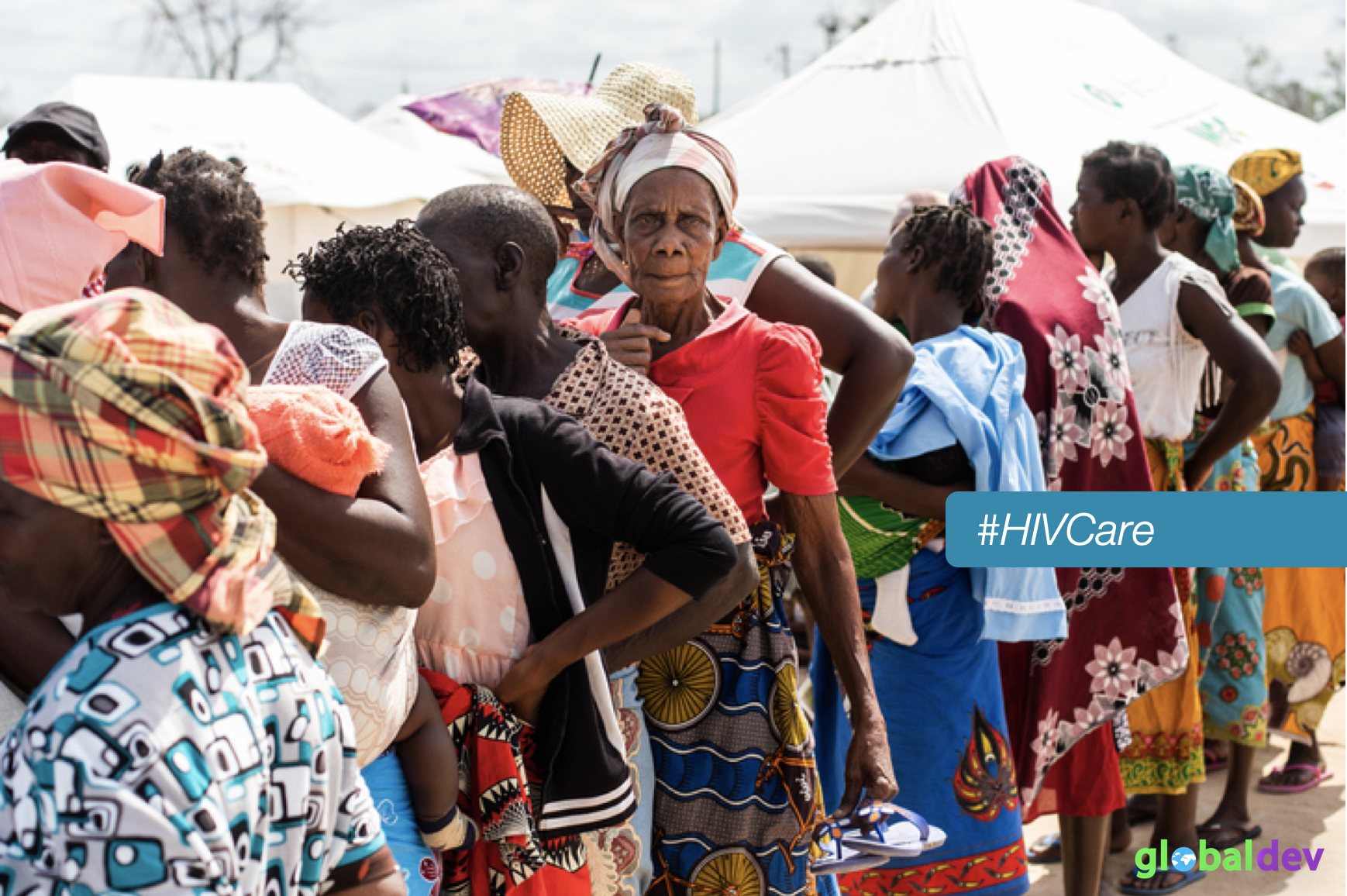Climate change significantly impacts public health, with effects that are complex, context-specific, and often tied to particular climatic events. In Bangladesh’s coastal regions, rising salinity in drinking water is harming public health, especially women’s reproductive health. Despite national efforts to build climate-resilient health systems, current policies overlook the critical issue of salinity and its gendered health impacts.
Bangladesh has a 710-kilometre coastline, covering about one-third of the country’s land area, which is home to over 25% of its population. These low-lying coastal districts along the Bay of Bengal are highly vulnerable to sea level rise, salinity intrusion, cyclones, and flooding. The intersection of various climate change impacts—such as extreme weather and environmental degradation—affects public health in diverse ways, influencing overall well-being.
In coastal areas, rising sea levels, storm surges, and flooding can push saltwater into rivers, ponds, and underground water sources. This process, known as saline intrusion, increases the salinity of drinking water, making it unsafe for drinking, agriculture, and everyday use.
According to the Soil Resources Development Institute (SRDI) data, salinity-affected land in Bangladesh increased from 83.3 million hectares in 1973 to 102 million hectares in 2000, and further to 105.6 million hectares by 2009. The highest levels of soil and water salinity were recorded in the coastal region, with water salinity often exceeding the World Health Organization’s (WHO) acceptable drinking range of 300–600 milligrams per litre.
Various studies have found that the presence of salt in drinking water in coastal areas of Bangladesh frequently surpasses recommended health limits. This salinization of drinking water stems from multiple causes and is expected to worsen due to climate change-induced sea-level rise. Salinity has increased throughout the nation by about 26% over the past three to four decades, spreading into areas that aren’t coastal as well.
Public policy and women’s health
The Government of Bangladesh’s attempt to introduce a National Health Policy in 1990 was unsuccessful, leaving the country without an official policy until the first was adopted in 2011.
Bangladesh has introduced various guidelines to build climate-resilient health systems, and the National Health Policy (2011) acknowledges growing climate-related challenges like salinity and drought. However, it does not address their impact on reproductive health, particularly that of women from the coastal regions of the country. Similarly, the Health-National Adaptation Plan (2018) also overlooks the reproductive health risks linked to salinity intrusion.

Salinity and women’s reproductive health
Studies show that women in coastal Bangladesh are disproportionately affected by climate change, with high salinity levels linked to reproductive health issues, skin diseases, and increased risk of urinary tract infections (UTIs). Excessively salty drinking water increases sodium intake, raising the risk of high blood pressure, hypertension, and pre-eclampsia in pregnant women. With rising sea levels and more frequent storms due to climate change, risks to women’s reproductive health are expected to grow.
During the dry season, many women are forced to wash clothes in polluted saline water or avoid washing after menstruation due to a lack of fresh water. This contributes to a range of reproductive health issues. Our research found that 87.3% of women reported problems with menarche, while 68.3% suffered from UTIs. Common reproductive health problems included early or delayed menarche (41.67%), irregular cycles (41.67%), infertility, recurrent miscarriages, pregnancy complications, low birth weight, premature delivery, leucorrhea, pelvic inflammatory disease (PID), and abdominal discomfort.
Saltwater contains various dissolved minerals. Among them, sodium and chloride are the most common, along with calcium, potassium, and magnesium. When menstrual blood—rich in iron—comes into contact with saltwater, it can create chemical compounds like iron chloride and magnetite. Repeated washing of menstrual cloths in salty water may lead to the absorption of these harmful compounds.
Exposure to fluoride in drinking water can also affect fertility by disrupting pregnancy-related hormones. Additionally, manganese in saltwater can form harmful compounds that have been linked to reproductive health issues in both women and men.
Gendered approach to climate change and health
In conclusion, climate change—particularly saltwater intrusion—poses serious health risks to coastal communities in Bangladesh, with women bearing the brunt due to limited resources and adaptive capacity. These impacts extend beyond health, threatening livelihoods, food security, and overall well-being. Addressing the gendered effects of climate change is essential for effective, inclusive adaptation strategies.
To address these gaps, an integrated approach is needed—combining public health interventions with climate adaptation and disaster risk reduction. Policies must prioritise developing resilient reproductive health systems, enhancing community awareness, and strengthening local healthcare capacity. Gender equity and women’s participation in decision-making should be central to these efforts. Without targeted action, climate-driven reproductive health issues could escalate into a national crisis.








